
30 Interesting NLP Interview Questions and Answers [Includes All 3 Levels]
Oct 10, 2025 6 Min Read 3335 Views
(Last Updated)
Are you preparing for an NLP interview but unsure where to start or what kind of questions you might face? Natural Language Processing (NLP) is a fast-evolving domain at the intersection of linguistics and machine learning, and it’s increasingly in demand across industries, from chatbots and virtual assistants to sentiment analysis and document processing.
To help you navigate interviews confidently, we’ve compiled the top 30 NLP interview questions and answers, categorized by beginner, intermediate, and advanced levels.
Whether you’re a fresher, a transitioning developer, or a seasoned ML enthusiast, this article is designed to sharpen your concepts and get you interview-ready. Without further ado, let us get started!
Table of contents
- Beginner-Level NLP Interview Questions and Answers
- What is NLP?
- What is the difference between NLP and NLU?
- Explain Tokenization in NLP.
- What is stemming and lemmatization?
- What are Stop Words?
- What is the Bag of Words model?
- What is TF-IDF?
- Name a few popular NLP libraries in Python.
- What is Named Entity Recognition (NER)?
- What is the difference between Rule-Based and Statistical NLP?
- Intermediate-Level NLP Interview Questions and Answers
- What are word embeddings?
- Explain Word2Vec and its two architectures.
- What is cosine similarity, and how is it used in NLP?
- What is the difference between precision, recall, and F1-score in NLP classification?
- How does POS tagging work?
- What is dependency parsing?
- What is a language model?
- What is the difference between BERT and GPT?
- How do you handle out-of-vocabulary (OOV) words?
- Give a code snippet for text classification using scikit-learn.
- Advanced-Level NLP Interview Questions and Answers
- What are Transformers in NLP?
- Explain the Attention Mechanism.
- What is self-attention in Transformers?
- How does BERT handle input sequences?
- What are some ethical concerns in NLP?
- Bonus: Scenario-Based Networking Questions and Answers
- You’re building a chatbot for customer support. How would you design it to handle ambiguous user inputs?
- Your sentiment analysis model wrongly classifies sarcastic comments as positive. What would you do?
- You need to extract company names from job descriptions, but many aren't well-known entities. How do you approach NER?
- You're building a search feature and need to match user queries with FAQs. What NLP techniques would you use?
- You are working on voice transcription and notice frequent errors in entity names (e.g., “Dell” becomes “tell”). How do you fix this?
- Conclusion
Beginner-Level NLP Interview Questions and Answers
![30 Interesting NLP Interview Questions and Answers [Includes All 3 Levels] 1 Beginner-Level NLP Interview Questions and Answers](https://www.guvi.in/blog/wp-content/uploads/2025/05/2087394686.png)
If you’re just getting started with Natural Language Processing, these questions will help reinforce your understanding of the core concepts. Expect questions on foundational topics like tokenization, stop words, Bag of Words, and basic libraries.
1. What is NLP?
![30 Interesting NLP Interview Questions and Answers [Includes All 3 Levels] 2 What is NLP](https://www.guvi.in/blog/wp-content/uploads/2025/05/02-1.png)
Natural Language Processing (NLP) is a field within Artificial Intelligence (AI) that focuses on enabling machines to interact with, understand, and generate human language. This involves both syntactic (structure) and semantic (meaning) processing.
2. What is the difference between NLP and NLU?
While the terms are often used interchangeably, they refer to different layers of understanding in language-based systems:
- NLP (Natural Language Processing) refers to the broader field that includes reading, understanding, generating, and translating human language using machines.
- NLU (Natural Language Understanding) is a subdomain of NLP that focuses on extracting meaning from text, essentially understanding the user’s intent.
3. Explain Tokenization in NLP.
Tokenization is the first and most fundamental step in NLP preprocessing. It involves splitting a large chunk of text into smaller pieces called tokens. These tokens could be:
- Words: “NLP is cool.” → [“NLP”, “is”, “cool”, “.”]
- Sentences: Break an entire paragraph into individual sentences
- Subwords: Common in modern language models like BERT
Tokenization helps machines understand text in a structured form and serves as the foundation for further processing like parsing, tagging, and vectorization.
4. What is stemming and lemmatization?
Both stemming and lemmatization are techniques to reduce words to their root form, but they differ in method and accuracy.
- Stemming: Applies heuristics to chop off suffixes. It might produce non-existent words.
- “running” → “run”
- “happily” → “happili”
- Lemmatization: Uses vocabulary and morphological analysis to get the correct root word (lemma).
- “better” → “good”
- “running” → “run”
5. What are Stop Words?
Stop words are common words in a language that are usually filtered out in NLP preprocessing. These words, like “the”, “is”, and”, “in”, don’t carry significant meaning and can add noise to models.
6. What is the Bag of Words model?
The Bag of Words (BoW) model is a simple and widely used technique to represent text data in numerical form.
Here’s how it works:
- Each document is converted into a “bag” of its words, ignoring grammar and word order.
- The model keeps count of how often each word occurs.
Despite its simplicity, BoW doesn’t capture meaning or context, which leads to limitations in complex NLP tasks.
7. What is TF-IDF?
TF-IDF stands for Term Frequency–Inverse Document Frequency. It’s an improved version of the Bag of Words model that scores words based on their importance to a document relative to a corpus.
- Term Frequency (TF): How often a word appears in a document
- Inverse Document Frequency (IDF): Measures how unique a word is across all documents
TF-IDF helps in reducing the weight of common words and increasing the weight of rare but meaningful words.
8. Name a few popular NLP libraries in Python.
Here are some widely used Python libraries for NLP:
- NLTK (Natural Language Toolkit): Great for educational purposes, supports tokenization, POS tagging, parsing, etc.
- spaCy: Industrial-strength NLP library with blazing speed and efficiency.
- TextBlob: Simple to use, especially for beginners.
Each library has its strengths depending on the use case and scale of your project.
9. What is Named Entity Recognition (NER)?
NER is the process of locating and classifying named entities in text into predefined categories such as:
- Person names
- Organizations
- Locations
- Dates
- Percentages
10. What is the difference between Rule-Based and Statistical NLP?
- Rule-Based NLP: Relies on predefined linguistic rules and grammar created by experts. Effective in controlled domains but not scalable for large or ambiguous datasets.
- Statistical NLP: Uses machine learning algorithms trained on large corpora to learn language patterns. It can generalize better, but requires a lot of data.
In real-world applications, many modern NLP systems combine both approaches to leverage precision and adaptability.
Intermediate-Level NLP Interview Questions and Answers
![30 Interesting NLP Interview Questions and Answers [Includes All 3 Levels] 3 Intermediate-Level NLP Interview Questions and Answers](https://www.guvi.in/blog/wp-content/uploads/2025/05/03-1.png)
Once you’ve nailed the basics, interviewers will start testing your ability to work with word vectors, similarity metrics, classification models, and context understanding.
The questions in this section focus on practical implementation and model-driven thinking, essential for mid-level roles and hands-on projects.
11. What are word embeddings?
Word embeddings are dense vector representations of words in a continuous vector space, where semantically similar words are mapped closer together.
Unlike Bag of Words or TF-IDF, which produce sparse and high-dimensional vectors, embeddings like Word2Vec, GloVe, and FastText encode semantic relationships. For instance:
- Vector(“king”) – Vector(“man”) + Vector(“woman”) ≈ Vector(“queen”)
12. Explain Word2Vec and its two architectures.
Word2Vec is a popular word embedding model introduced by Google. It learns word relationships based on surrounding context using two architectures:
- CBOW (Continuous Bag of Words): Predicts the target word from surrounding context words.
- Skip-Gram: Predicts surrounding context words given a target word.
Both are trained using shallow neural networks and produce meaningful word vectors.
13. What is cosine similarity, and how is it used in NLP?
Cosine similarity measures the cosine of the angle between two vectors. In NLP, it’s widely used to:
- Compare document similarity
- Match user queries with search results
- Measure semantic similarity between word embeddings
Formula:
cos(θ) = (A · B) / (||A|| * ||B||)
14. What is the difference between precision, recall, and F1-score in NLP classification?
These are evaluation metrics for classification tasks like sentiment analysis or NER.
- Precision: Of all predicted positives, how many are correct?
- Formula: TP / (TP + FP)
- Formula: TP / (TP + FP)
- Recall: Of all actual positives, how many did we catch?
- Formula: TP / (TP + FN)
- Formula: TP / (TP + FN)
- F1-Score: Harmonic mean of precision and recall. A balanced metric.
- Formula: 2 * (Precision * Recall) / (Precision + Recall)
15. How does POS tagging work?
POS (Part-of-Speech) tagging assigns grammatical categories—such as noun, verb, adjective—to each word in a sentence.
For example:
- “The quick brown fox jumps over the lazy dog.”
- “The” → Determiner
- “fox” → Noun
- “jumps” → Verb
Techniques used:
- Rule-based tagging (using grammar rules)
- Statistical models (like Hidden Markov Models)
- Neural network-based models (like BiLSTMs)
POS tagging is crucial for syntactic parsing, question answering, and coreference resolution.
16. What is dependency parsing?
Dependency parsing identifies grammatical relationships between words in a sentence. It determines which words depend on others and how.
For example:
- Sentence: “She eats an apple.”
- Dependency Tree:
- “eats” → Root
- “She” → Subject of “eats”
- “apple” → Object of “eats”
Libraries like spaCy can perform dependency parsing with built-in models.
17. What is a language model?
A language model (LM) is trained to predict the next word in a sequence based on the previous words. It’s fundamental to NLP tasks like text generation, autocomplete, and translation.
Types:
- N-gram models: Predict based on the previous N-1 words (e.g., bigram, trigram)
- Neural LMs: Use RNNs, LSTMs
- Transformer-based models: Like GPT and BERT, capable of understanding long-range dependencies
18. What is the difference between BERT and GPT?
| Feature | BERT | GPT |
| Direction | Bidirectional | Unidirectional (left-to-right) |
| Use Case | Classification, NER, QA | Text generation, dialogue |
| Training | Masked Language Modeling | Next Word Prediction |
| Output Token | [CLS], [SEP] for sentence pairs | Autoregressive text generation |
In simple terms:
- BERT reads both left and right context → better understanding.
- GPT predicts the next word using left context only → better generation.
19. How do you handle out-of-vocabulary (OOV) words?
OOV words are those not seen during training. Handling them is important to avoid loss of meaning or breakdown of the model.
Strategies:
- UNK token: Replace unknown words with a universal token.
- Subword tokenization: Break words into known pieces (e.g., BERT uses WordPiece).
- Character-level models: Encode words using characters, not vocabulary.
- Use pre-trained embeddings: More likely to contain rare words.
Modern NLP models like BERT and GPT handle OOV words better through subword techniques.
20. Give a code snippet for text classification using scikit-learn.
Here’s a simple example of building a text classification model using TfidfVectorizer and MultinomialNB.
from sklearn.feature_extraction.text import TfidfVectorizer
from sklearn.naive_bayes import MultinomialNB
from sklearn.pipeline import make_pipeline
# Sample training data
train_texts = ["I love NLP", "This is amazing", "Terrible experience"]
train_labels = ["positive", "positive", "negative"]
# Create model pipeline
model = make_pipeline(TfidfVectorizer(), MultinomialNB())
# Train model
model.fit(train_texts, train_labels)
# Predict
test_texts = ["NLP is fantastic"]
print(model.predict(test_texts)) # Output: ['positive']This pipeline is a great starting point for tasks like sentiment analysis or spam detection.
Advanced-Level NLP Interview Questions and Answers
![30 Interesting NLP Interview Questions and Answers [Includes All 3 Levels] 4 Advanced-Level NLP Interview Questions and Answers](https://www.guvi.in/blog/wp-content/uploads/2025/05/04-1.png)
At the advanced level, you’re expected to understand the inner workings of transformer architectures, attention mechanisms, fine-tuning strategies, and ethical considerations in NLP.
These questions are common in research-oriented roles, product-based companies, or senior AI/NLP positions where depth of understanding is critical.
21. What are Transformers in NLP?
Transformers are a type of deep learning architecture introduced in the paper “Attention is All You Need” (Vaswani et al., 2017). They revolutionized NLP by enabling models to process entire sequences in parallel rather than sequentially (as in RNNs or LSTMs).
Transformers are the backbone of models like BERT, GPT, T5, RoBERTa, and more.
22. Explain the Attention Mechanism.
Attention is a method that allows models to focus on relevant parts of the input sequence when generating outputs. It helps the model understand which words are more important in context.
Types:
- Bahdanau attention: Additive attention used in RNN-based encoder-decoder models.
- Scaled dot-product attention: Used in transformers.
23. What is self-attention in Transformers?
Self-attention is a specific kind of attention mechanism where each word in a sentence considers every other word (including itself) to build a better representation.
For example, in the sentence:
“The animal didn’t cross the street because it was tired.”
Self-attention helps the model understand that “it” refers to “animal” rather than “street.”
24. How does BERT handle input sequences?
BERT uses a specific input format and tokenization strategy:
- [CLS]: A special classification token added at the beginning.
- [SEP]: Separator token used for sentence-pair tasks (e.g., QA, NLI).
- Token Embeddings: Each word or subword is converted into an embedding.
- Segment Embeddings: Distinguish sentence A and B (in case of pair input).
- Positional Embeddings: Encodes the position of tokens.
BERT is trained using Masked Language Modeling (MLM) and Next Sentence Prediction (NSP) tasks.
25. What are some ethical concerns in NLP?
As NLP models grow more powerful, several ethical issues emerge:
- Bias: Models can reflect gender, racial, or cultural biases present in training data.
- Misinformation: Large language models can generate fake or misleading content.
- Privacy: Models may inadvertently memorize and leak sensitive information.
- Toxicity: Unfiltered models may produce offensive or harmful language.
- Overreliance: Excessive dependence on language models without human oversight can be risky.
Bonus: Scenario-Based Networking Questions and Answers
Beyond theoretical knowledge, many interviews test how well you can apply NLP techniques in realistic situations. These scenario-based questions assess your ability to think critically, make design decisions, and troubleshoot language-related problems:
1. You’re building a chatbot for customer support. How would you design it to handle ambiguous user inputs?
To handle ambiguity, I would implement the following strategies:
- Intent classification confidence threshold: If the model’s confidence is low, prompt the user for clarification.
- Fallback responses: Use a default flow to ask questions that narrow down the user’s intent.
- Context tracking: Maintain conversation context to resolve ambiguity based on prior exchanges.
- NER and POS tagging: Identify key entities or action verbs to infer likely intent.
Using pre-trained models like BERT for intent recognition, combined with rule-based decision trees, would offer a robust hybrid approach.
2. Your sentiment analysis model wrongly classifies sarcastic comments as positive. What would you do?
Sarcasm is a known limitation for most sentiment models. To improve this:
- Dataset enhancement: Introduce sarcastic examples into the training data.
- Use contextual models: Fine-tune transformer-based models like RoBERTa or DeBERTa, which can better understand subtle tones.
- Feature engineering: Include punctuation (e.g., excessive “!” or “…”) and keyword patterns (like “Yeah, right”) as features.
- Multimodal cues (if applicable): If it’s a social media post with emojis or images, these can provide additional context for sarcasm.
3. You need to extract company names from job descriptions, but many aren’t well-known entities. How do you approach NER?
Standard NER models may fail to recognize lesser-known or startup company names. My approach would include:
- Custom NER training: Use spaCy or HuggingFace’s Transformers to train a new model with annotated job descriptions.
- Data labeling: Create a labeled dataset with domain-specific company names.
- External knowledge integration: Use a business name database (e.g., LinkedIn or Crunchbase API) to validate or auto-correct predictions.
- Post-processing: Apply pattern-based rules (e.g., terms after “at”, “by”, or “hiring”) to boost recall.
4. You’re building a search feature and need to match user queries with FAQs. What NLP techniques would you use?
To match semantically similar questions and answers:
- Embedding-based similarity: Convert queries and FAQs to embeddings using Sentence-BERT or Universal Sentence Encoder.
- Cosine similarity: Rank FAQs based on cosine similarity scores with the user query.
- TF-IDF fallback: In case embeddings aren’t available, use TF-IDF vectors for keyword-based matching.
- Intent detection: Classify the query intent first, then match it within a narrowed-down FAQ cluster.
For speed and scalability, I’d use vector databases like FAISS for real-time similarity search.
5. You are working on voice transcription and notice frequent errors in entity names (e.g., “Dell” becomes “tell”). How do you fix this?
In speech-to-text systems, named entity recognition is often challenged by homophones and uncommon terms. To handle this:
- Custom vocabulary: Update the speech recognition model’s vocabulary to include brand names and entities.
- Post-processing NER: Apply a context-aware NER model on transcribed text to detect and correct entities.
- Phonetic matching: Use phonetic similarity algorithms like Soundex or Metaphone to match misheard entities with likely candidates.
Combining ASR correction layers with post-transcription NER usually yields the best results.
If you want to kickstart your NLP journey and learn more about machine learning in the best way possible, then consider enrolling in HCL GUVI’s IIT-M Pravartak Certified Artificial Intelligence & Machine Learning Course, where you will master technologies like matplotlib, pandas, SQL, NLP, and deep learning and build interesting real-life machine learning projects.
Conclusion
In conclusion, mastering NLP isn’t just about understanding concepts—it’s about being able to apply them, explain them clearly, and solve real-world problems with them.
These 30 carefully selected questions will help you assess your knowledge, identify gaps, and approach your NLP interviews with confidence. As NLP continues to shape the future of AI-driven applications, staying sharp with both fundamentals and cutting-edge techniques will give you a significant advantage.
Keep practicing, stay curious, and you’ll be well on your way to cracking your next interview.


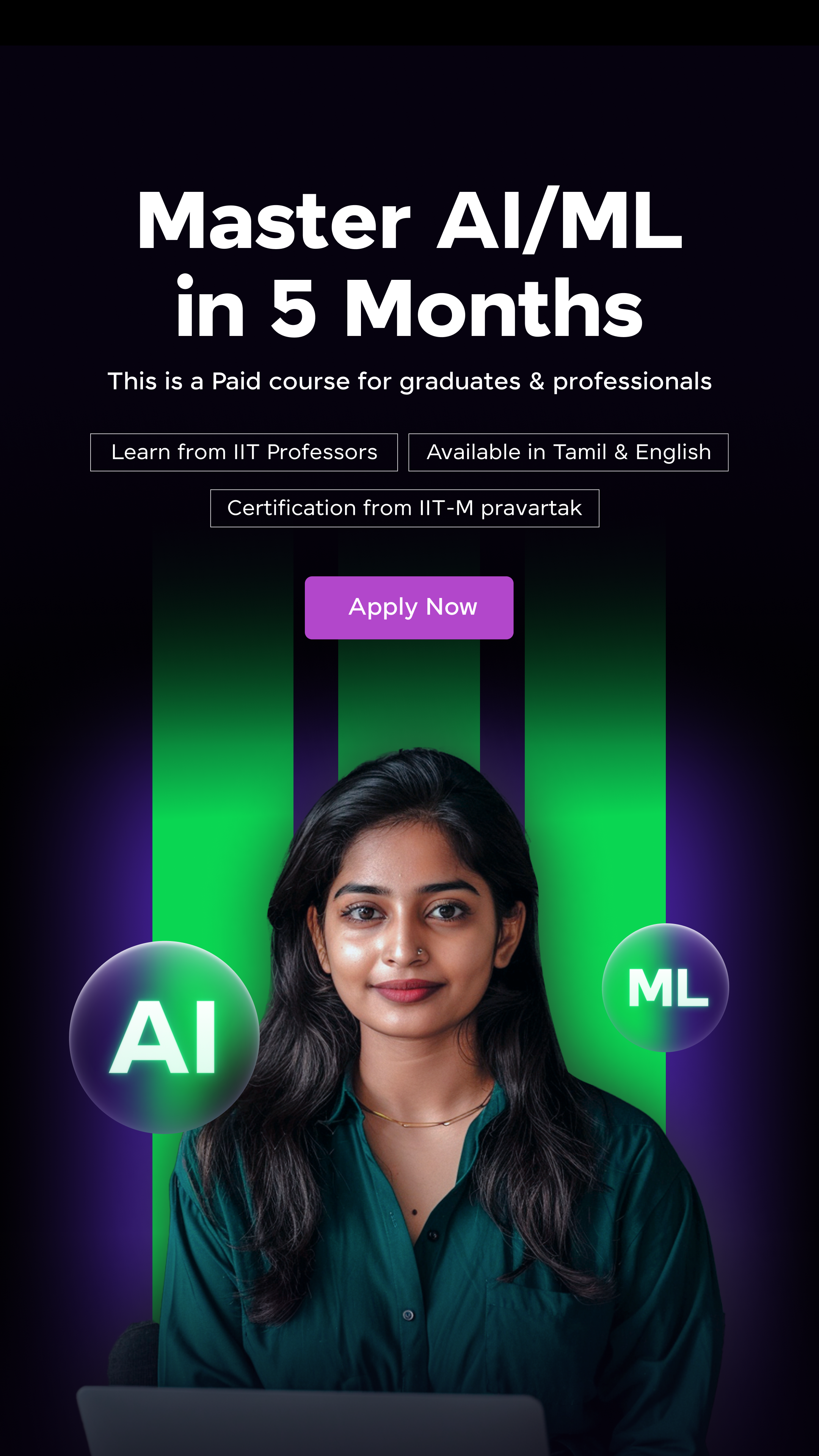
















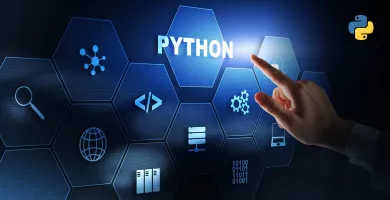




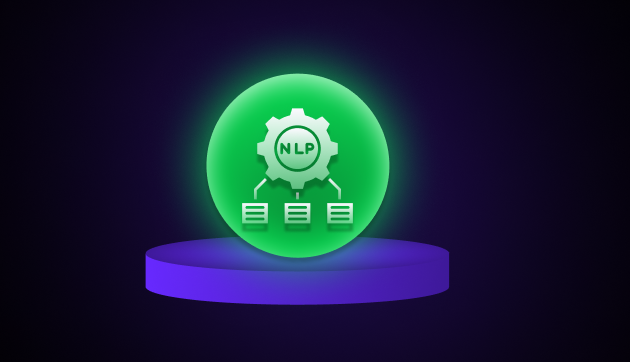

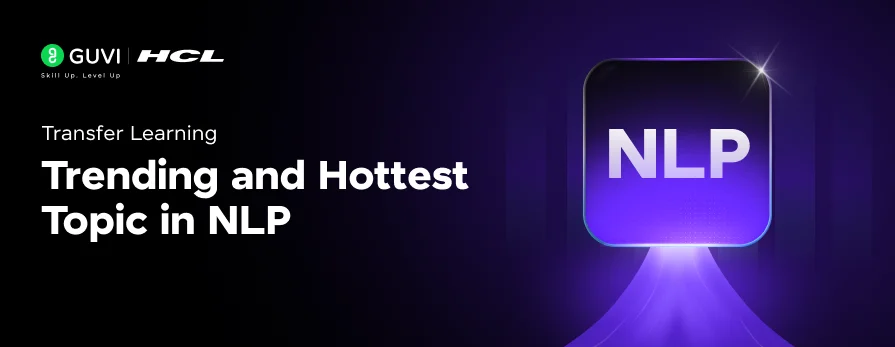
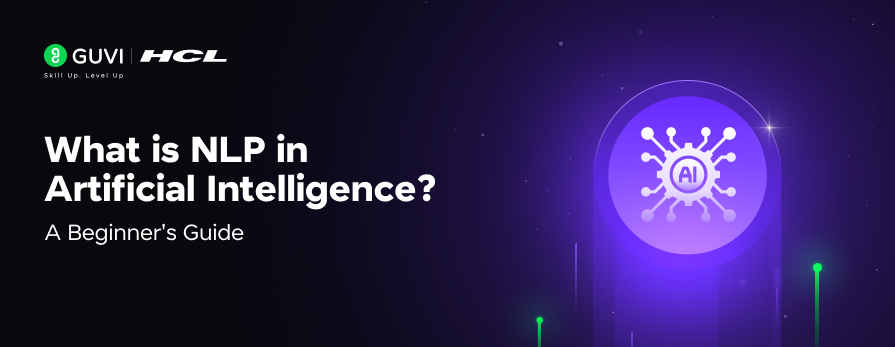





Did you enjoy this article?